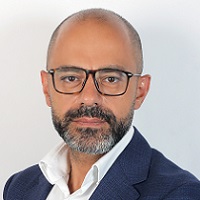 By Charbel Rizkallah, Sr. Director, Healthcare Offering Management, Honeywell Sensing and Safety Technologies
By Charbel Rizkallah, Sr. Director, Healthcare Offering Management, Honeywell Sensing and Safety Technologies
X: @honeywell
More hospitals and healthcare centers worldwide are embracing a “hospital to home” model of care focused on decentralizing healthcare – specifically, getting patients out of the hospital and enabling them to receive care outside of hospital walls, often in their own home. By treating patients with chronic illness and others remotely, hospitals can free up critical beds for emergency patients who truly need them.
From a technology perspective, the hospital to home migration is powered by advanced sensors that monitor and transmit a patient’s vital signs and other critical healthcare data to cloud-based platforms. Clinicians can use a mobile device or tablet to securely access this data and determine if it indicates any change in treatment.
Critical technologies enable shift from hospital to home
Through remote patient monitoring (RPM), clinicians can be alerted when patient vitals exceed certain thresholds or indicate abnormal trends. Early detection can be critical in enabling clinicians to initiate treatment sooner and potentially mitigate a condition that could otherwise require a hospital admission.
You may have heard the phrase ‘value-based care,’ which is all about improving quality of care and, with it, patient outcomes. Innovating remote monitoring technologies is the very essence of that concept: enabling detection of a downturn in patient health as soon as it starts. If clinicians can learn sooner when something may be wrong, they can not only save patients’ lives but potentially spare them significant expenses and emotional turmoil that can be associated with emergency room admittance.
When participating in major industry shifts like this one, it’s important to step back and view the big picture to make sure new solutions organizations come up with won’t cause more harm than good. One of the concerns I hear from physicians is that the sheer volume of data generated by home monitoring devices might potentially overwhelm them.
The ability to digitally monitor at-home patients 24/7, after all, could saddle a doctor who typically treats 10 to 15 patients in the hospital with an influx of patients remotely streaming data to them simultaneously. This is a problem artificial intelligence (AI) and machine learning (ML) can address by weeding through massive quantities of data and alerting the physician only to those cases that require an action or a decision.
Integrating AI and ML into these cloud-enabled sensor technologies will thus allow us to move from data collection to decision-enabling and, potentially, decision-making. This is the level of technology we’re aiming for to advance the hospital to home initiative without overburdening the care system.
Reduce burnout, boost productivity for clinicians
Burnout is an urgent issue that is at the root of numerous problems in the healthcare space right now. It’s a challenge that spans hospital floor staff to home health employees. In an industry that already has limited resources, clinician exhaustion is further straining the care system. Unfortunately, some of the strongest providers are leaving the profession altogether.
To address burnout, we must give providers the tools and resources to do their job more efficiently, which means freeing them to focus their talents and training on clinical treatment.
For example, many of the nurses we have spoken with say they monitor up to 20 patients during a shift, which means taking vitals every four hours at 20 minutes per patient. This can mean 50% or even 60% of their shift is spent collecting data manually from each patient.
Sensors and other remote monitoring devices can help to automate these processes, which may not only increase job satisfaction and forestall nurse burnout, but also reduce their chances of making medical errors by automating manual, error-prone tasks. It’s a win-win scenario.
Hospital to home can benefit underserved populations
One of the biggest challenges in healthcare is access. Remote patient monitoring is helping address two common access bottlenecks: congestion in large city hospitals and difficulty reaching patients in rural or economically challenged communities.
Using the same sensing technology, data sharing and other capabilities such as video and telemedicine, one doctor can now care for a larger pool of patients because they don’t need to be physically located together.
A “just-in-time” solution to a looming healthcare crisis
According to the U.S. Department of Health and Human Services’ 2021 Profile of Older Americans, about 80.8 million people in the United States will be 65 or older by 2040 – more than twice as many as in 2000. Meanwhile, the number of younger Americans – those in their 30s and 40s – diagnosed with chronic diseases is growing rapidly.
This means that in 20 to 30 years’ time, the pool of patients flooding hospitals will have increased dramatically. Society—from med-tech companies to healthcare providers to payers—need to be prepared, and remote patient monitoring will factor critically in addressing that daunting challenge. Forward-thinking organizations are poised to help the hospital to home care model not merely succeed but prevail.
Check out this episode of FINN Voices, where host Beth Friedman talked to Robert Robinson, Vice President and General Manager of Honeywell’s Healthcare Solutions business. Robert has been innovating sensing technology across industries for the past 18 years. Today, he designs and develops sensor solutions at Honeywell that help hospitals and providers deliver better patient outcomes. Tune in to hear Robert’s perspective on the move from hospital to home and the latest technological innovations to support that transition.
